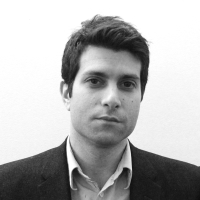BAGHDAD — He’s like a ghost from the nightmare world of Saddam Hussein. Izzat Ibrahim al Douri was for decades one of the Iraqi tyrant’s blood-covered right-hand men and—this is what’s important now—Saddam’s liaison with radical jihadists the world over. If Saddam and Osama bin Laden never had a meeting of the minds, it wasn’t because al Douri didn’t try.
Today, still surviving despite numerous reported health problems, and still on the loose despite a promised $10 million reward for his capture, the 72-year-old al Douri is allied with the so-called Caliph Ibrahim who has led the conquest of much of Syria and Iraq.
Formerly known by the acronym ISIS, and now called the Islamic State, the group’s campaign includes beheading, crucifying, and executing its enemies en masse while throwing down the toilet the trillion-plus dollars the United States spent trying to create a stable democracy in Iraq.
As the incompetent government and cowardly army officers of Iraqi Prime Minister Nouri al Maliki lose more territory by the day, Washington indulges in what is, for the short term, wishful thinking about the potential divisions in the ranks of the jihadist storm troopers, with al Douri supposedly at the center of the discord. His followers claim to be Sufi Muslims and many of them come from Saddam’s old Ba’ath Party. Ibrahim’s Sunni fanatics claim to hate Sufis and they destroy their shrines, while the Ba’ath used to be militantly secular—even anti-religious.
But “used to be” is the operative phrase here. Yes, there are tensions. Sometimes there are shootouts. But the fundamental goal of the caliphate alliance—to slaughter Shia, roll back Iran’s presence in Iraq, and humiliate Washington in the process—is very dear to all those associated with it.
In Baghdad, al Douri’s name rarely comes up in conversations about the war. To invoke it would be to acknowledge that this is not only a fight against jihadists like ISIS, but also a broader coalition that includes political Islamists, Ba’athists and Sunni tribes. Only when you push the point will Iraqis familiar with the ISIS campaign admit that al Douri still wields power in the Sunni north of the country.
Al-Douri in the flesh—pale, freckled and flushed, his skin drawn tightly over his cadaverous face—is sometimes likened to The Red Skull in the old Captain America comics. Back in 1993, as was reported at the time, he looked especially intense. It was not quite two years after a U.S.-led coalition drove Saddam out of Kuwait in Desert Storm, and al Douri was presiding over a hate-America conference for jihadists from all over the map. Chechens in Persian-lamb hats, Gulf Arabs in short thobes, North Africans in kaftans—radicals “from Jakarta to Dakar,” as one Senegalese delegate put it—had gathered (all expenses paid) at Baghdad’s enormous Rashid Hotel.
“Everyone has a task to do, which is to go against the American state,” al Douri proclaimed. The line against the USA would be drawn in Iraq, he said: “Our stand now can lead us to final victory, to Paradise.”
By this time Saddam had shed the Ba’athist ideology of secularism to embrace his own showy brand of Islamic radicalism. “God Is Great” written in Saddam’s hand was emblazoned on the national flag. Liquor was banned. Draconian punishments were meted out to supposed sinners and traitors. (Saddam especially liked to order tongues and ears cut off.) And al Douri proclaimed that the whole Islamic world would follow “the mujahed Saddam Hussein, who is leading this nation against the nonbelievers.”
What the smarter jihadists at that conference understood was that Saddam wanted to use them for his own purposes in the 1990s, just as he had used secular left-wing Palestinian terrorists like Abu Abbas and Abu Nidal in the 1980s. But those jihadists who had real vision, along the lines of Bin Laden and the Egyptian Ayman al Zawahiri, had their own agendas (Al Qaeda, back then, was not a global brand), and they weren’t interested in Saddam’s death-of-regime conversion. That’s why U.S. Vice President Dick Cheney and his team never turned up a link between Saddam and 9/11: It wasn’t there.
In 2003, when the United States led its invasion of Iraq to topple Saddam, and passed out decks of cards with pictures of the Butcher of Baghdad’s top cronies, al Douri ranked sixth as the King of Clubs. Yet, somehow, al Douri escaped the American dragnet. Saddam had given him access to the Iraqi government’s slush funds, so he would have had the resources to pay people off. He probably found some sort of asylum in Syria. In any case, al Douri started working to regain power for his old cronies, and for himself.
For several years the Red Skull’s mission looked like a hopeless one. He may even have pissed off Saddam. When the old tyrant was on trial awaiting his inevitable execution in 2006, a Baghdad TV station broadcast what purported to be an audio interview. It was picked up by the translation service MEMRI and widely publicized in the United States. It may, in fact, have been a hoax (by whom is not clear). It’s no longer on the MEMRI site, and the language is very Monty Python, but it’s also very Saddam. If it’s parody, it is spot on.
In the interview the death-row dictator denounced al Douri for giving an unauthorized speech. “All Izzat al Douri ever wanted was to address the Iraqis as their leader, even if just for a few short minutes,” Saddam was supposed to have said. He claimed he once told al Douri, “I spit on your owl’s face,” and al Douri’s latest presumption merited much worse: “The punishment that I want for him is to cut off his tongue and ears. … And if Izzat al Douri continues giving speeches in sign language, like the deaf do, I demand that his hands be cut off. And so on and so forth, until Izzat al Douri is finished, and we get rid of this degenerate.”
Al Douri at the time was trying to pull together the remnants of the old Ba’ath Party while looking for alliances with the new generation of jihadists. Many Ba’ath leaders had been scattered, imprisoned or killed. A few had joined the rebellion against the American occupation, but they were at odds with the local sheikhs they once oppressed, and with the jihadists of Al Qaeda in Iraq, who did not trust them. The Anbar Awakening and other aspects of the so-called “Surge” in 2007 further marginalized al Douri and his people.
The situation began to change dramatically, however, when the revolt in neighboring Syria that began in 2011 opened the doors to a widening jihad that first drew on fighters from Iraq, then started sending them back as more experienced and better equipped combatants than they had ever been before. The group that called itself the Islamic State of Iraq and al Sham (ISIS) created a new dynamic, and, in parallel, al Douri’s name once again resurfaced as a leader of something called the Army of the Men of the Naqshabandi Order, or, more prosaically, the Naqshabandi Army.
The name refers to a Sufi order that is mystical in its philosophy and Masonic in its operations, developing close ties and helpful relationships among the members of its secretive society the world over. But the Naqshabandi order, in its various forms, is vast, while al Douri’s “army” numbers at most a few thousand men and may have appropriated the name as cynically as other radical groups appropriate the words Islam and Muslim.
In the context of the caliphate insurgents, al Douri’s few thousand loyal followers in the Naqshabandi order are a significant factor. ISIS’s victories have been accomplished with only around 6,000 core fighters in Iraq. Al Douri’s group, like ISIS, has drawn support from Iraqi Sunnis who may not share all of the group’s beliefs but are sympathetic to its war against Baghdad’s government. As a Ba’athist group, the Naqshabandi appeal to Sunnis nostalgic for the Ba’athist era hierarchy that privileged them above Iraq’s Shia population—an order that was overturned after the U.S. invasion.
Without a common enemy, the Naqshabandi and ISIS might resume their natural enmity. Whichever of the groups was in power would be marching the other to the gallows. Given enough time, and the unlikely collapse of the Baghdad government, that scenario may still play out. But with a Shia-led government still to fight they are on the same side, and the two most powerful elements within the mysterious and complex web of alliances that make up the ISIS-led coalition.
Al Douri himself has remained an elusive figure despite the Naqshabandis’ new prominence. In an unauthenticated audio recording from early July, someone claiming to be al Douri praised a litany of Sunni Islamist groups in Iraq for their role in the insurgency and extolled “the heroes and knights of Al-Qaeda and the Islamic State.”
In the near term, it appears the Caliph and the Red Skull may need each other to maintain their territorial gains in the north of Iraq. An Iraqi officer stationed in the military’s Samarra operations center said the two groups “work together under the ISIS flag.” To advance from Mosul south toward Baghdad, ISIS has used a marauding strategy, attacking the army in one area before retreating to a safer location. “After ISIS captures an area they bring in the Naqshabandi to control the area,” the officer said.
In Mosul, where ISIS is strongest and feels least threatened by the army, the most clashes with the Naqshabandi have been reported. It’s ruling a conquered area that has surfaced the core conflicts between the groups’ philosophies. The ability to reconcile doctrinal differences (always the most passionate and bloody points of dispute among revolutionary ideologues) could be further tested by Caliph Ibrahim’s recent demand that all his allies pledge allegiance to him. But, quite unintentionally, Iran may help on that score.
More than a year ago, the Red Skull appeared in a video on the Web urging fighters to take up arms against Maliki. Seated at a desk in front of a Saddam-era flag, and wearing the olive drab uniform that members of Saddam’s circle affected in the 1980s during their eight-year stalemated war against Tehran, al Douri told his fighters “the people of Iraq and all its nationalist and Islamic forces support you until the realization of your demands for the fall of the Persian alliance.”
The ISIS line is purely sectarian: Kill the apostate Shia. The al Douri line is more nationalistic: Kill the Iranian invaders. But as tens of thousands of Shia volunteers and organized Shia militias have entered the war against ISIS—many of them trained and supported by Iran—they have fueled that paranoid vision of a “Persian Alliance” inside Iraq.
That the Iranians seem as feckless as the Maliki government they support encourages the Caliphate alliance, meanwhile, to heighten its offensive and, for the moment, stay unified.
As long as there is an Iranian presence in Iraq the radical jihadists and al Douri’s people have a cause that binds them together. And given that both groups tend to identify any Shia—the majority of Iraq’s population—as “Iranians,” this could be a very long fight indeed.
No one knows that better than al Douri.
The Red Skull of Baghdad has shown over the years he can be quite flexible when it come to his personal survival, and as far as we know, he still has his ears and tongue.
Jacob Siegel reported from Baghdad. Christopher Dickey, who attended the Baghdad jihadist conference in 1993, reported from Paris.







